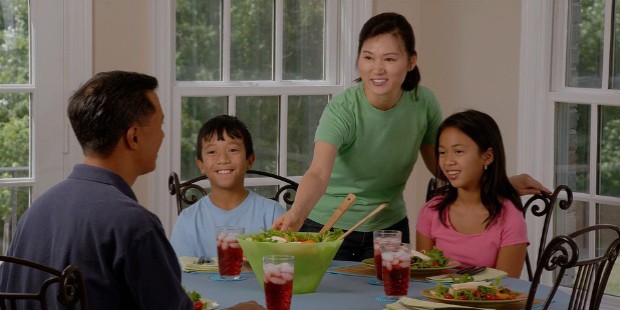6 Steps to Family Conflict Resolution

A Family is the basic unit in a society and conflicts within a family are not necessarily a sign of lack of unity among the members. It may occur due to differences of opinion, views, misunderstanding, financial issues, spending habits, cleanliness, extra marital affairs, sibling rivalry and property disputes. Sometimes, it could occur due to the addition of a new member to the family through marriage. Attitude of teenagers, grandparents, lack of respect, poor communication between members, and unreasonable expectations on children may also raise conflicts.
The family atmosphere should be joyous, fun, entertaining, happy and should foster love among the members. When there are unresolved conflicts, the joy of togetherness doesn’t prevail. When the relations are strained, life becomes stressful and could even lead to diseases. The disintegration of joint families and the rise of nuclear families, working spouses, children more influenced by peers and television- all these create new crises within families to be dealt with.
Here are six ways to handle family conflicts
1.Acknowledge the Problem

The first step in resolving a conflict is to acknowledge it and accept to talk it out with the partner or concerned members. What are the issues causing uneasiness between you and your spouse or children? It could be related to finance, behavior, spending or extra marital relationships.
2. Listen and Respond During Negotiation

If you get emotional while listening to accusations, solutions don’t emerge. Even if you are accused, listen more and respond, not react. If household chores and job are taking a toll on your spouse’s health and you are not helpful, the solution could be hiring a maid or providing assistance.
3. Acknowledge the Hormonal Changes and Generation Gap in Children

Teenage children can cause stress in the family as they go through hormonal changes and troubles associated with creating their own identity. Their attitudes and behavior could be in conflict with your grandparents. Make children respect you and elders even when their attitudes differ.
4. Understanding and Compromise

If you have issues with your spouse or other family members, a lasting solution doesn’t come from compromise or counter-arguments but from an understanding of the issues. If the quarrel is about your drinking habits or smoking, don’t raise a counter argument on her spending on jewellery or cosmetics.
5. Avoid Blaming Family Members

Never blame your family members or talk about their shortcomings in front of them or in their absence. It creates ill-will and will damage any chance of getting the problems resolved. Moreover, those who hear your grievances may, in fact, aggravate it rather than give a solution.
6. Seek External Help

You may have tried all possible ways to resolve a conflict based on your knowledge and experiences but sometimes you may require the support of a psychotherapist or counselor who is trained to handle such issues. It could be anger in children or recurring fights and quarrels with your spouse.
Happy families create happy nations. It has been observed that criminal, deviant, and anti-social behavior result from unhappy families and where discontentment is prevalent. Kids who grow up in stressful, troubled families have trouble adjusting to the demands of social life. Sometimes, rude behavior on roads, anger outburst or adjustment problems in work place are related to an unhappy atmosphere in home. An attitude of forgiveness and ability to forget are important in resolving family discords. Once an issue has been resolved, care should be taken not to raise the issue again when a different issue crops up in the future.









